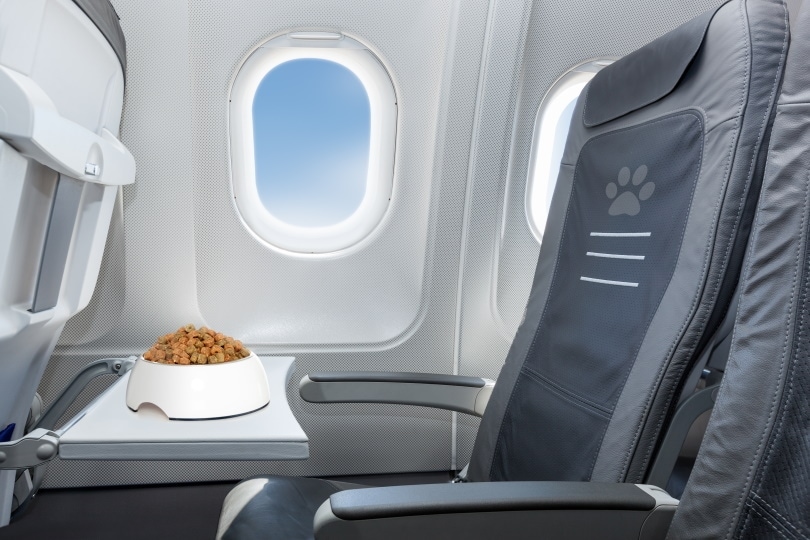What Were Boxers Bred For? Origins, Jobs & History

Updated on

The Boxer is a relatively new breed, but its ancestors can be traced back thousands of years. Its most ancient ancestors were used in war, whereas the more direct ancestors were used for hunting purposes. The modern-day Boxer is primarily a family pet, but it is still used as a working dog in certain situations.
Understanding the history of the Boxer can help you understand its unique personality and striking looks. Keep reading to learn more.
Early Ancestors
Some of the earliest ancestors of the Boxer can be traced as far back as the ancient Assyrians around 2000 BC. During this time, there was a breed of dog that was used for war and was described very similarly to the modern-day Boxer.
The name “Molossian” eventually came about to describe this dog. Even though Molossians are extinct today, this is the earliest known ancestor of the Boxer to have been named. It is confirmed that the Molossian led to the German Bullenbeisser, which is a direct ancestor to the modern Boxer.

Boxers During The Middle Ages
During the Middle Ages, the German Bullenbeisser began popping up around Europe. During this time, the Bullenbeisser had a small, stocky form. It is believed that the breed originated from the Molossian after the dog spread across Europe.
The description of the Bullenbeisser is very similar to the Boxer. It has a strong build, short hair, and a large head with a drooping upper lip and strong teeth. As the Middle Ages progressed, three types of Bullenbeissers came about from cross-breeding, eventually eradicating the species.
The first was the classic Bullenbeisser-Mastiff. The second was a hound that evolved from the crossing between a Bullenbeisser and some sort of Deer Hound or Old Wolf. The last type of Bullenbeisser was a smaller variety that came about through natural selection. The Boxer is linked with this third variety.
It is believed that these various types of Bullenbeissers were used in the Middle Ages for hunting purposes. They were primarily supplied to courts so that the nobility could hunt with utmost convenience and skill.

Bullenbeissers Become More Popular (1700s)
Around the 1700s, Bullenbeissers became more popular, especially the smaller breed associated with Boxers. It was believed that the smaller breed was bred in northeast Belgium in the area of Brabant. Most scholars agree that this is the location of the earliest Boxer breeding.
Here, the smaller Bullenbeisser bred with Old English Bulldogs brought over from Great Britain. Their ears and tails were cropped, while their bodies were still muscular, though smaller than other Bullenbeisser varieties.
Bullenbeissers Bred In Germany (1800s)
By the 1800s, most of the German noble estates were broken up because of the Napoleonic wars. As a result, the Bullenbeisser was no longer a breed exclusively for nobility, but it was still used for hunting purposes primarily. Packs of Bullenbeissers were used for hunting boars and bears.
Consequently, the breed became popular among butchers and cattle dealers. The breed also became a popular family and guard dog for its intelligence and protectiveness. By the end of the 1800s, the Boxer Club was formed in Munich and defined the standards for the breed.

The Modern Boxer Emerges (1900s)
By the 1900s, the Boxer was an official breed throughout the world and in 1904, the Boxer was officially registered by the American Kennel Club. The breed was even used for military work during World War I. It often worked as an attack dog, guard dog, pack carrier, and messenger dog.
It wasn’t until after World War II that Boxers became very popular in the United States. Soldiers were introduced to these valuable dogs during the war and brought puppies back to the States. Since then, Boxers have become one of the most popular breeds for their intelligence, loyalty, and quirky personalities.
Boxers Today
Today, Boxers are beloved by many people. In fact, they are the 14th most popular breed in the States. The breed is recognized by a number of clubs and associations, including the Kennel Club. This breed is even recognized by the American Kennel Club Working Group.
Although Boxers were originally bred for working purposes, they are a favorite family dog today. They are very patient and love to play with children. At the same time, they are protective and will guard the home in case of an intruder.
Some individuals still prefer to have Boxers for working purposes. For example, farmers and outdoor workers love to have a Boxer by their side. Even if the Boxer does some jobs around the farm, most are still a part of the family come nighttime.
As a result, Boxers are most associated as family pets, not working pets. Although their strength and intelligence make them well-suited for working, most people today love to have these furry critters in their homes as lovable companions and loyal guard dogs.

Final Thoughts
As you can see, the history of the Boxer dates way back. Although the official breed itself is only slightly over 100 years old, its ancestors can be traced back thousands of years. Surprisingly, these lovable and playful dogs were originally bred for war and working purposes. This makes these dogs intelligent, loyal, and protective, but they are not naturally aggressive.
A Boxer may be a good choice for you if you are looking for an energetic, playful, but protective dog to add to your family. This dog will love to be a part of the pack and will do its best to care for the family members and make sure everyone has a best friend.
Featured Image Credit: Charlotte Yealey, Pixabay










